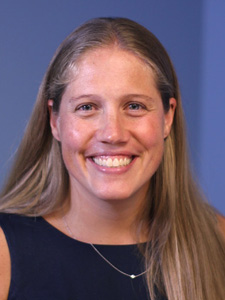Putting Unsafe Sleep Marketing to Bed

Last week I was sharing some of the exciting work happening in my NICHQ projects with my family and they asked (jokingly) what my boss had against me.
You see, I’m expecting my first child in July and they couldn’t imagine how I could enjoy working on projects related to infant mortality. My take is a little different. As a soon to be parent, I feel lucky to not only be informed about these important topics, but also grateful to be able to help make a difference in the lives of other mothers and infants across the nation.
One area of particular concern for me is sleep-related infant deaths. Safe sleep practice is one of the six focus areas in NICHQ’s current infant mortality project, the Collaborative Improvement and Innovation Network to Reduce Infant Mortality (Infant Mortality CoIIN), a multiyear national movement engaging federal, state and local leaders, public and private agencies, professionals and communities to employ quality improvement, innovation and collaborative learning to reduce infant mortality and improve birth outcomes. Prior to working on this project, I had heard of the “back to sleep” campaign and knew that babies should sleep alone, but I wasn’t aware that babies should be placed in a crib free of all blankets, pillows, stuffed animals and bumpers.
For months I’d been imagining all the adorable crib accessories that would fill our nursery without knowing that it creates an unsafe sleep environment. I started thinking about how many families must be confused or unaware of the safe sleep guidelines. A Pottery Barn Kids catalog I recently flipped through makes it pretty clear how that can be the case. The catalog is filled with dozens of pictures of nurseries, none of which showed the safe, recommended sleep environment. I immediately wrote to their marketing department informing them of the American Academy of Pediatric guidelines and encouraging them to change their catalog and online pictures to align with the guidelines.
It’s vitally important that parents and other infant caregivers receive consistent and accurate messaging on safe sleep—from their healthcare providers, their support systems, state agencies and what they see in media and retail. But unfortunately, expectant families receive a lot of mixed messages. We all need to do a better job translating what the research identifies as best practices into helping families in the day-to-day practice of caring for their infants.
This is an important part of the work happening in the Infant Mortality CoIIN initiative and we’re seeing some exciting innovations to address the issue. In Florida, Ohio and Louisiana, for example, first responders like police and fire fighters are checking for unsafe sleep environments and educating families about safe sleep. Pennsylvania and West Virginia have developed training programs and toolkits for hospitals to use in educating families on safe sleep practices. And NICHQ’s partner organizations in this effort are working to ensure that families have access to cribs and that media and advertising have guidelines and access to images that promote safe sleep for infants.
And while I never heard back from Pottery Barn Kids, I’ll continue to do my part personally by talking to managers at stores with crib displays that are unsafe. Plus I’ll continue in my professional capacity to help states across the country use quality improvement to make changes that protect the health and lives of our children.
Mother’s Day is the perfect time to draw attention to the information and support that mothers and families need. I am grateful for what I’ve learned through my work and how prepared I feel to practice safe sleep with my baby, come July. I encourage us all to think about what we can do to make sure that is the case for every mother.
Tricia Finnerty, MSc, is an improvement advisor and associate project director at NICHQ.
